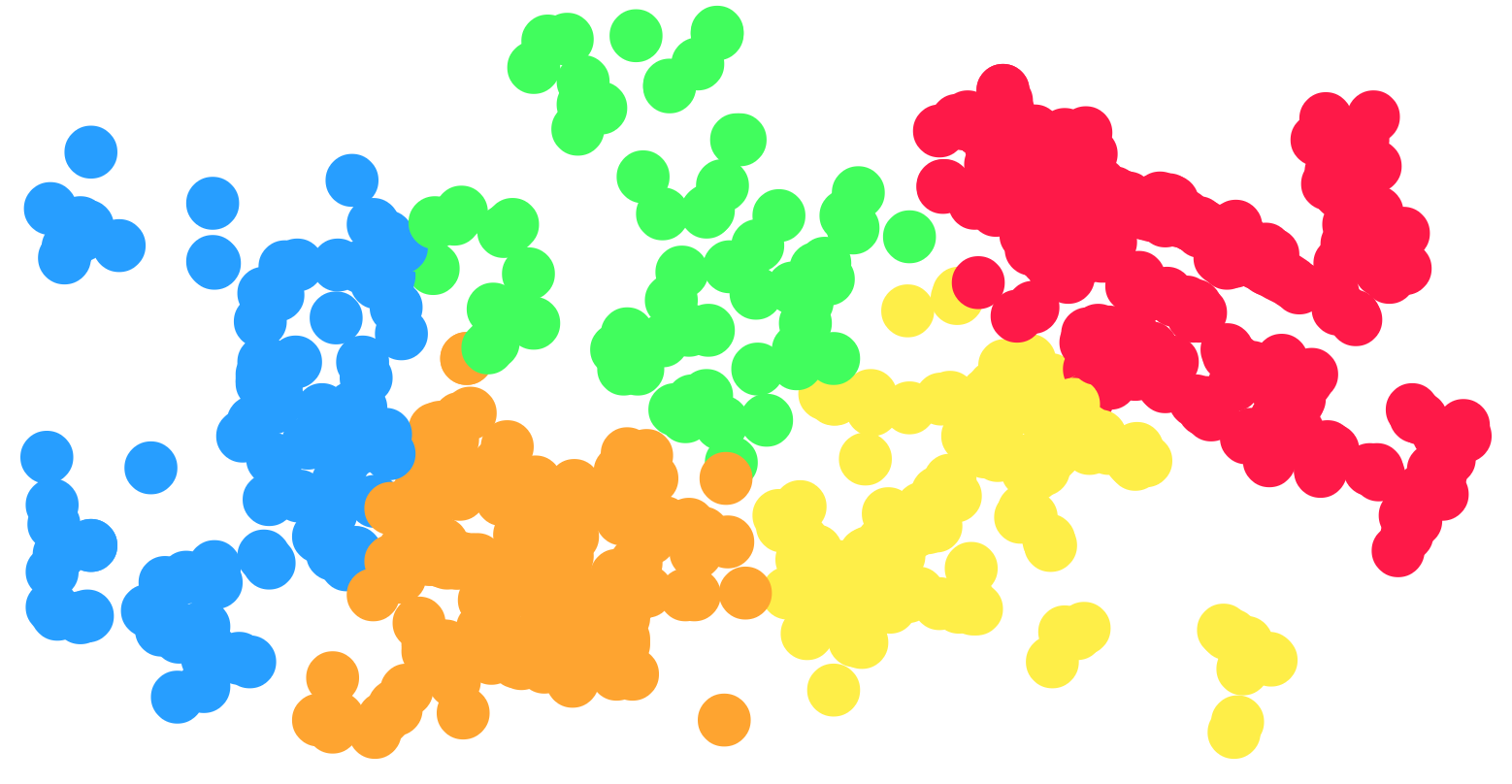codedix-cytoscape-k-means v1.0.0
cytoscape-k-means and cytoscape-k-medoids

k-means and k-medoids algorithms for Cytoscape.js.
Zoe Xi, for Google Summer of Code.
Dependencies
- Cytoscape.js >= 2.6.12
Usage instructions
Download the library:
- via npm:
npm install cytoscape-k-means, - via bower:
bower install cytoscape-k-means, or - via direct download in the repository (probably from a tag).
require() the library as appropriate for your project:
CommonJS:
var cytoscape = require('cytoscape');
var kMeans = require('cytoscape-k-means');
kMeans( cytoscape ); // register extensionAMD:
require(['cytoscape', 'cytoscape-k-means'], function( cytoscape, kMeans ){
kMeans( cytoscape ); // register extension
});Plain HTML/JS has the extension registered for you automatically, because no require() is needed.
API
The k-means and k-medoids algorithms return an array of clusters generated from the data set (nodes of the calling graph instance). Each cluster contains references to the nodes that belong to that cluster.
var options = {
k: '3', // number of clusters to return
distance: 'euclidean', // distance classifier
maxIterations: 12, // maximum number of iterations of the k-means algorithm in a single run
attributes: [ // attributes/features used to group nodes
function(node) {
return node.data('attrA');
},
function(node) {
return node.data('attrB');
},
function(node) {
return node.data('attrC');
},
// And so on...
]
};
var clusters = cy.elements().kMeans( options ); // Run the k-means algorithm.
clusters[0].myFunc(); // Do something cool with the nodes found in the first cluster.
var clusters = cy.elements().kMedoids({ // Run the k-medoids algorithm.
/**
* Note: The same options apply for the k-medoids algorithm.
*
* One of the major differences between the k-means and k-medoids algorithms
* is the manner in which the cluster centers are initialized. In k-means,
* the cluster centers (centroids) are vectors with elements initialized to
* random values within each dimension's range. In k-medoids, the cluster
* centers (medoids) are random nodes from the data set.
*
* The other is that the k-means algorithm determines new cluster centers
* by taking the average of all the nodes within that cluster, whereas
* k-medoids selects the node with the lowest configuration cost as the new
* cluster center.
*/
});Distance metric
The metric used to measure the distance between two nodes. By default it is set to 'euclidean' distance. It can be one of the pre-defined functions: 'euclidean', 'manhattan', 'max',
or you may pass in your own function (see the distances object for examples) that returns a float representing the distance between a node and cluster center.
Publishing instructions
This project is set up to automatically be published to npm and bower. To publish:
- Set the version number environment variable:
export VERSION=1.2.3 - Publish:
gulp publish - If publishing to bower for the first time, you'll need to run
bower register cytoscape-k-means https://github.com/cytoscape/cytoscape.js-k-means.git
3 years ago